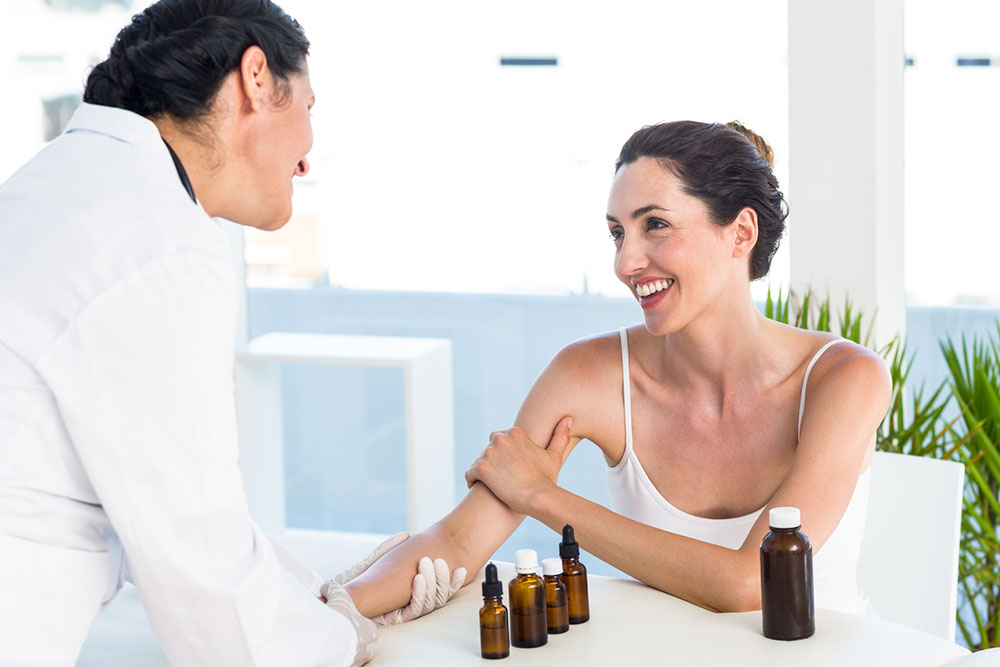Skin Rashes – Signs, Types, Diagnosis, and Management
Skin is susceptible to various conditions that can cause visible signs like rashes. Even allergic reactions and bug bites can trigger rashes. The number and size of rashes can vary depending on the cause, but they are typically patches of swollen or irritated skin. They can be itchy and painful, causing discomfort. While some skin rashes heal on their own, others require prompt treatment, making it important to keep an eye out for warning signs.

Signs of skin rashes
A few changes in the skin indicate the development or the presence of a rash.
- Blotchiness
- Scaly or dry skin
- Itchy skin
- Hive-like welts
- Swelling or inflammation
- Redness
- Infected, broken skin
- Pain
- Blistering
- Circular red patches
- Shiny, flat-topped bumps
Types
Skin rashes can be of various types depending on the cause.
1. Dermatitis
This is a name for a group of issues that lead to itchy, red, and inflamed patches of skin. Its two most common types are contact dermatitis and atopic dermatitis (eczema). Both types can be a result of the body’s reaction to an irritant, like fragrances, nickel, preservatives, and other chemicals.
2. Hives
Urticaria (hives) is a name for raised, itchy, red skin welts typically brought on by an allergic reaction to airborne allergens or insect stings. These types of rashes may also result from extreme temperature changes and other bacterial infections.
3. Psoriasis
A chronic skin disorder, psoriasis leads to scaly, thick rashes on the skin. These rashes are often observed around the elbows, lower back, and scalp. This skin condition is believed to be triggered by genetic and environmental factors.
4. Viral conditions
A skin rash could be a common symptom of several viral conditions, including molluscum contagiosum, chickenpox, and measles.
5. Pityriasis rosea
This type of skin rash is usually mild and manifests as large, pink, scaly patches on the neck, abdomen, upper arms, legs, chest, or back. The rashes can vary in number and size and can be itchy, red, and inflamed.
6. Lichen planus
A common skin condition, lichen planus may lead to flat-topped, shiny bumps with an angular shape and red-purple color. While the bumps may appear anywhere on the skin, they usually affect the insides of the wrists and ankles, back, neck, and lower legs. Sometimes, lichen planus may develop inside the mouth, on the scalp, or on the nails. Thick clusters of bumps may develop as well, especially around the shins. This type of skin rash type usually affects adults in the age group of 30–70.
Identifying a skin rash
As there are different types of rashes characterized by their underlying cause, it is important to know exactly what one is dealing with. To determine the type of rash one has, one can simply look up “10 types of skin rashes” or “skin rash identifying chart” and click on credible sources offering detailed descriptions of each type. One could even look up images of skin rashes and use them as a reference to determine the exact issue they have. But, for more accurate results, one should speak with a dermatologist, who will conduct a thorough examination with the help of various tests and offer a diagnosis.
1. Skin biopsy
One of the most common diagnostic methods involves taking a small portion of skin from the affected area and sending it to a lab to check for harmful viruses or bacteria.
2. Blood test
The presence of certain skin diseases can be confirmed by checking for antibodies in the blood. Also, rashes can result from systemic conditions, i.e., those that affect the whole body. So, blood tests would help examine whether other organs have been affected.
3. Allergy test
This diagnostic method may involve exposing the skin to various substances to check for allergic reactions. This helps determine the trigger for rashes.
Management
Once the doctor has identified the type of skin rash, they might recommend relevant management options to address the underlying cause and visible symptoms.
1. Treatment options
A treatment plan may include prescriptions, topical options, and other ways to reduce rashes. Additionally, phototherapy, which uses ultraviolet light from advanced lamps, can be used to relieve eczema-induced skin rashes.
2. Home remedies
In addition to treatments, a healthcare expert might recommend certain natural skin rash remedies to relieve itching and redness.
Oatmeal bath: A warm bath with colloidal oatmeal can help relieve dry, itchy skin rashes. Store-bought oatmeal products may also work.
Cold therapy: Applying ice or cold water to a rash can reduce swelling, inflammation, and itching instantly. One could also use cold compresses or a damp cloth here.
Coconut oil: The medium-chain fatty acids in coconut oil have antibacterial, antiviral, anti-inflammatory, and healing properties, which could help relieve dermatitis symptoms to an extent. One could use the oil to moisturize the skin and scalp or just the affected areas to relieve irritation.
Epsom salt bath: An Epsom salt bath may also help relieve skin rashes. The magnesium content in the salt could help improve the skin barrier function, retain moisture, and reduce inflammation. One can add two cups of Epsom salts to warm bath water and soak in it for 15 minutes before rinsing it off and pat-drying the skin. The last step here should be moisturizing the skin.
Tea tree oil: This antiseptic and anti-inflammatory oil is believed to be a remedy for infections. This is because the terpenes in tea tree oil are said to break up the cellular material of bacteria. But, one should consult a doctor before starting with such skin rash treatments.


